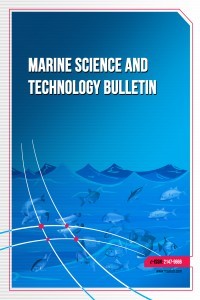
Marine Science and Technology Bulletin
Yazarlar: Berke KISAOĞLAN, Zeliha DEMİREL, Meltem CONK DALAY
Konular:Denizcilik, Deniz ve Tatlı Su Biyolojisi, Biyoteknoloji ve Uygulamalı Mikrobiyoloji
DOI:10.33714/masteb.951265
Anahtar Kelimeler:Cyanobacteria,Extraction,Phycobiliprotein,Phycocyanin,Pseudanabaena sp.
Özet: Phycocyanin is a precious, natural, blue coloured pigment-protein complex that has commercial value and wide application in cosmetics, food, and pharmaceutical industries. In the present study, we performed various cell disruption methods (ultrasonication, homogenization, freeze/thaw and CaCl2 extraction) for phycocyanin extraction from different forms of biomass of a thermophilic Pseudanabaena sp. that has a high potential to produce high-quality phycocyanin. Using potassium phosphate buffer and ultrasonic bath method, we achieved the highest phycocyanin yield (345 mgPC.g -biomass) from freeze-dried biomass and we obtained increased yield as the duration of application increases. Phycocyanin yields were calculated as 345 mgPC.g -biomass, 255 mgPC.g -biomass and 220 mgPC.g -biomass for 5, 10 and 15 min, respectively. In this study, cell disruption methods have determined significantly more effective on freeze-dried biomass rather than frozen biomass. Phycocyanin content of freeze-dried biomass was analysed after six months of storage and dramatic decrement was observed in the phycocyanin content of the cells.